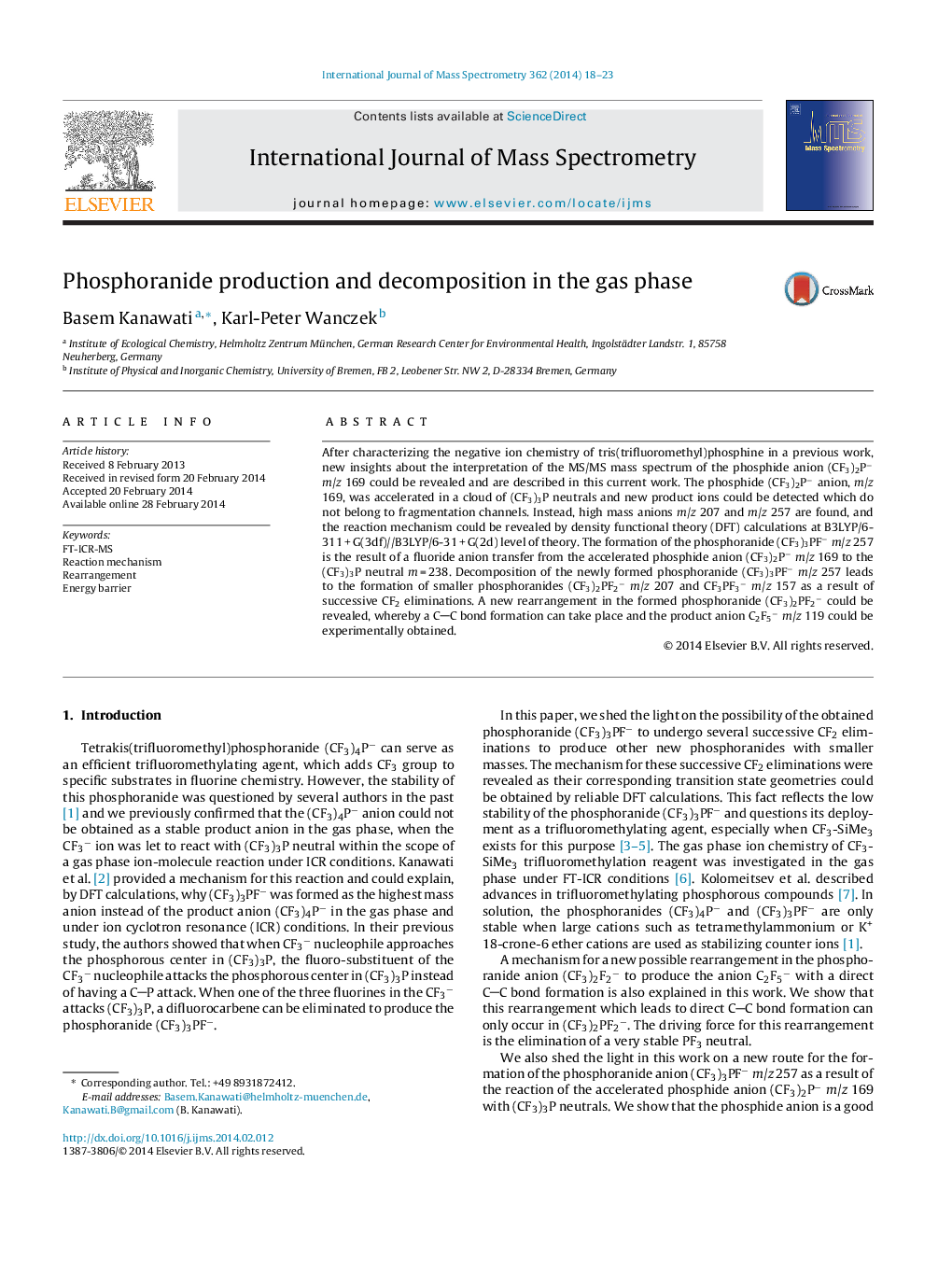| Article ID | Journal | Published Year | Pages | File Type |
|---|---|---|---|---|
| 1192903 | International Journal of Mass Spectrometry | 2014 | 6 Pages |
•The mechanism for the production of phosphoranides is revealed.•Decomposition mechanism of phosphoranides was also thoroughly studied by DFT.•Thermodynamic and entropy effects for phosphoranide ion formation were studied.•Excellent agreement between DFT calculated and experimentally determined geometry parameters of phosphoranides are obtained.
After characterizing the negative ion chemistry of tris(trifluoromethyl)phosphine in a previous work, new insights about the interpretation of the MS/MS mass spectrum of the phosphide anion (CF3)2P−m/z 169 could be revealed and are described in this current work. The phosphide (CF3)2P− anion, m/z 169, was accelerated in a cloud of (CF3)3P neutrals and new product ions could be detected which do not belong to fragmentation channels. Instead, high mass anions m/z 207 and m/z 257 are found, and the reaction mechanism could be revealed by density functional theory (DFT) calculations at B3LYP/6-311 + G(3df)//B3LYP/6-31 + G(2d) level of theory. The formation of the phosphoranide (CF3)3PF−m/z 257 is the result of a fluoride anion transfer from the accelerated phosphide anion (CF3)2P−m/z 169 to the (CF3)3P neutral m = 238. Decomposition of the newly formed phosphoranide (CF3)3PF−m/z 257 leads to the formation of smaller phosphoranides (CF3)2PF2−m/z 207 and CF3PF3−m/z 157 as a result of successive CF2 eliminations. A new rearrangement in the formed phosphoranide (CF3)2PF2− could be revealed, whereby a CC bond formation can take place and the product anion C2F5−m/z 119 could be experimentally obtained.
Graphical abstractFigure optionsDownload full-size imageDownload high-quality image (111 K)Download as PowerPoint slide
